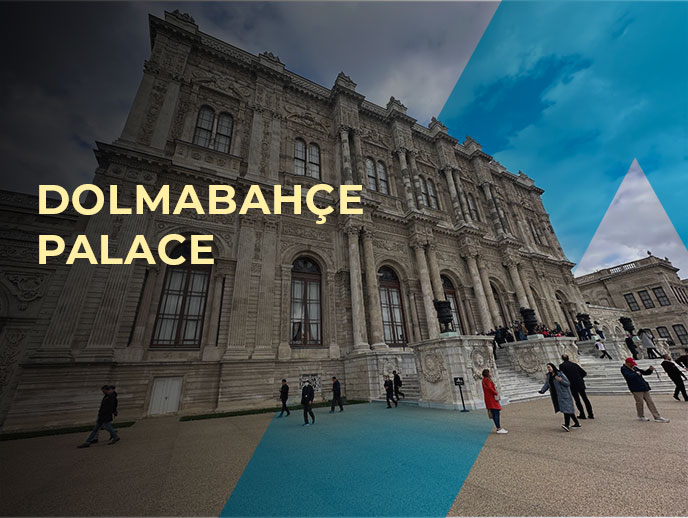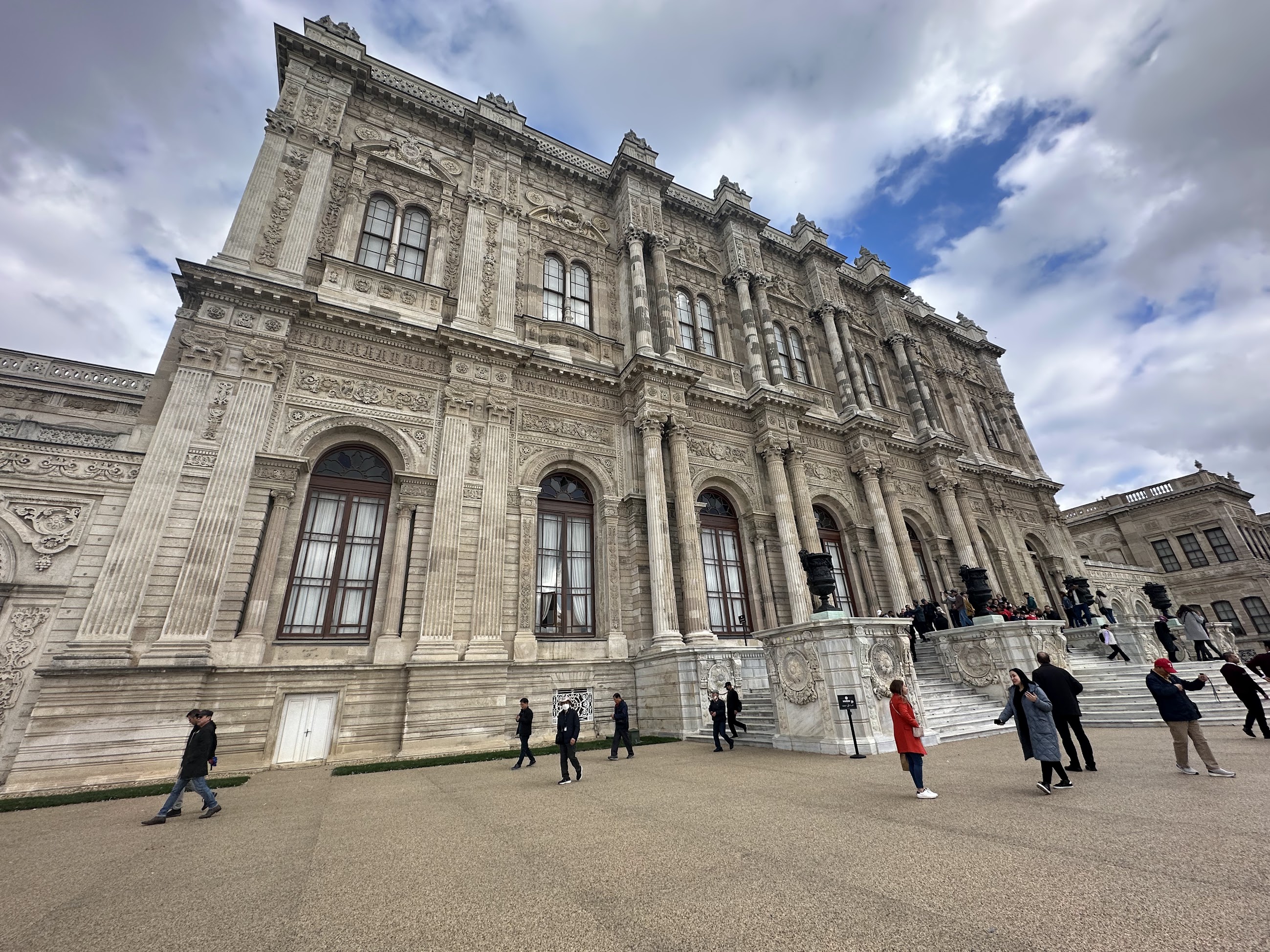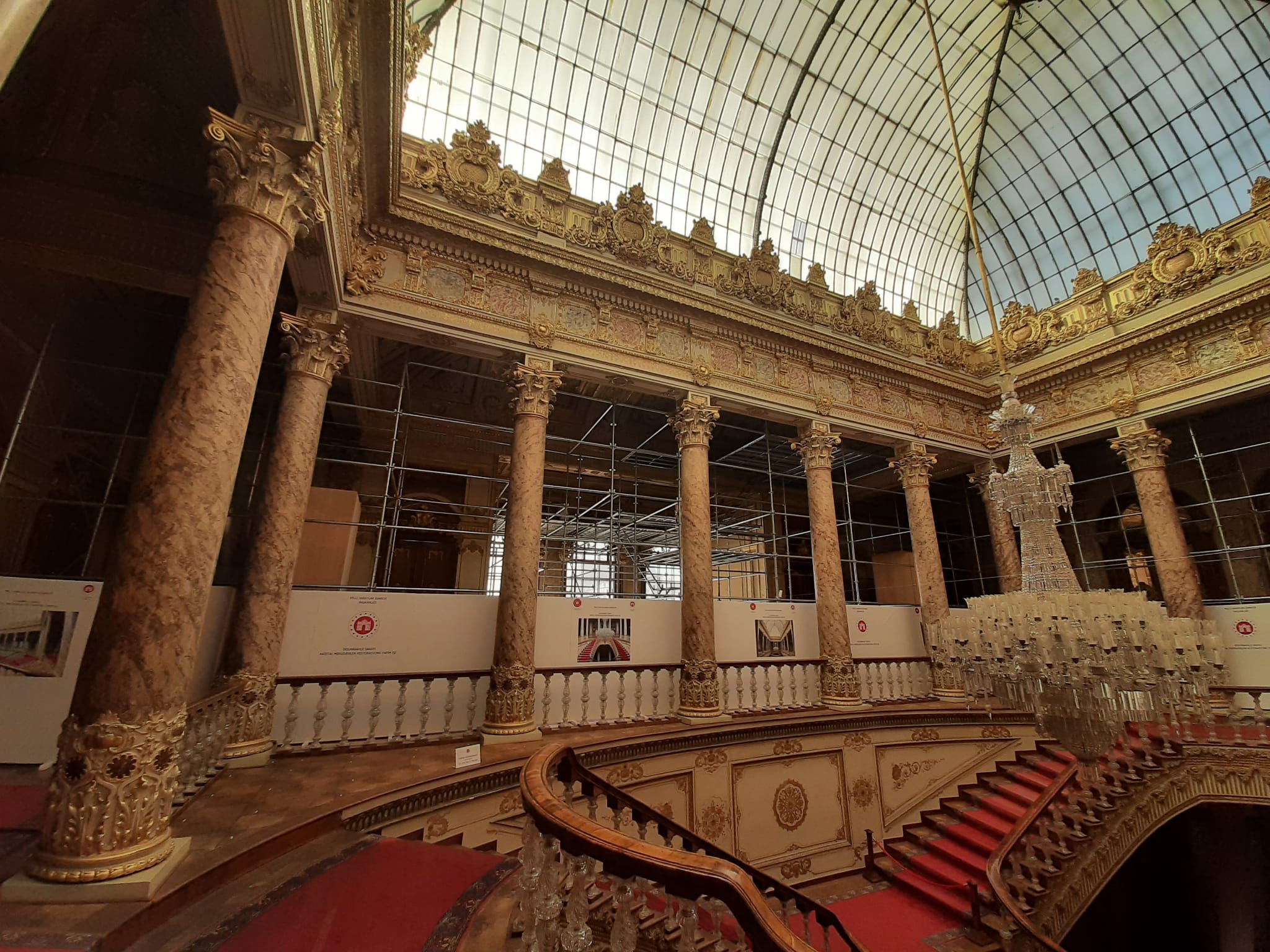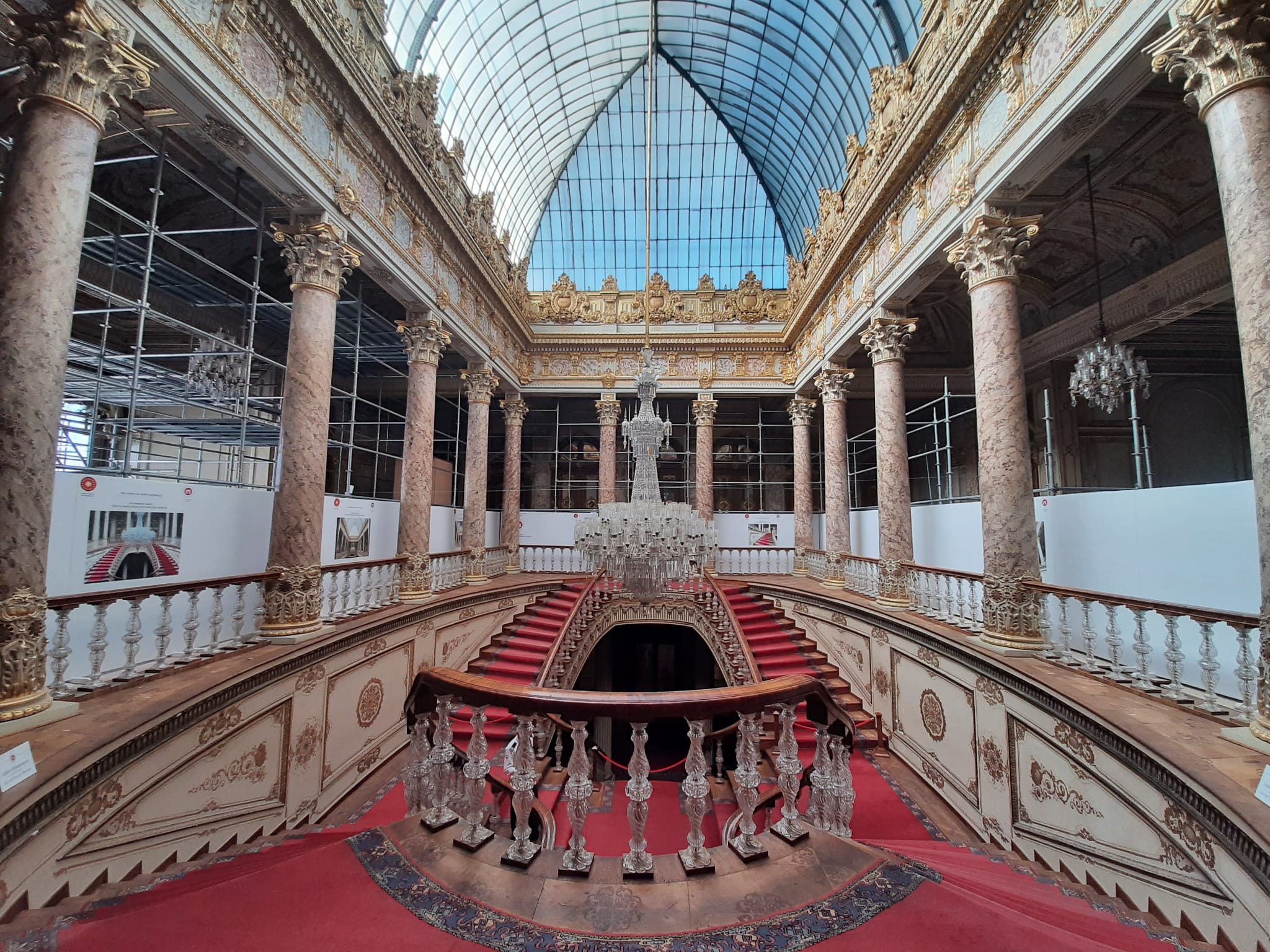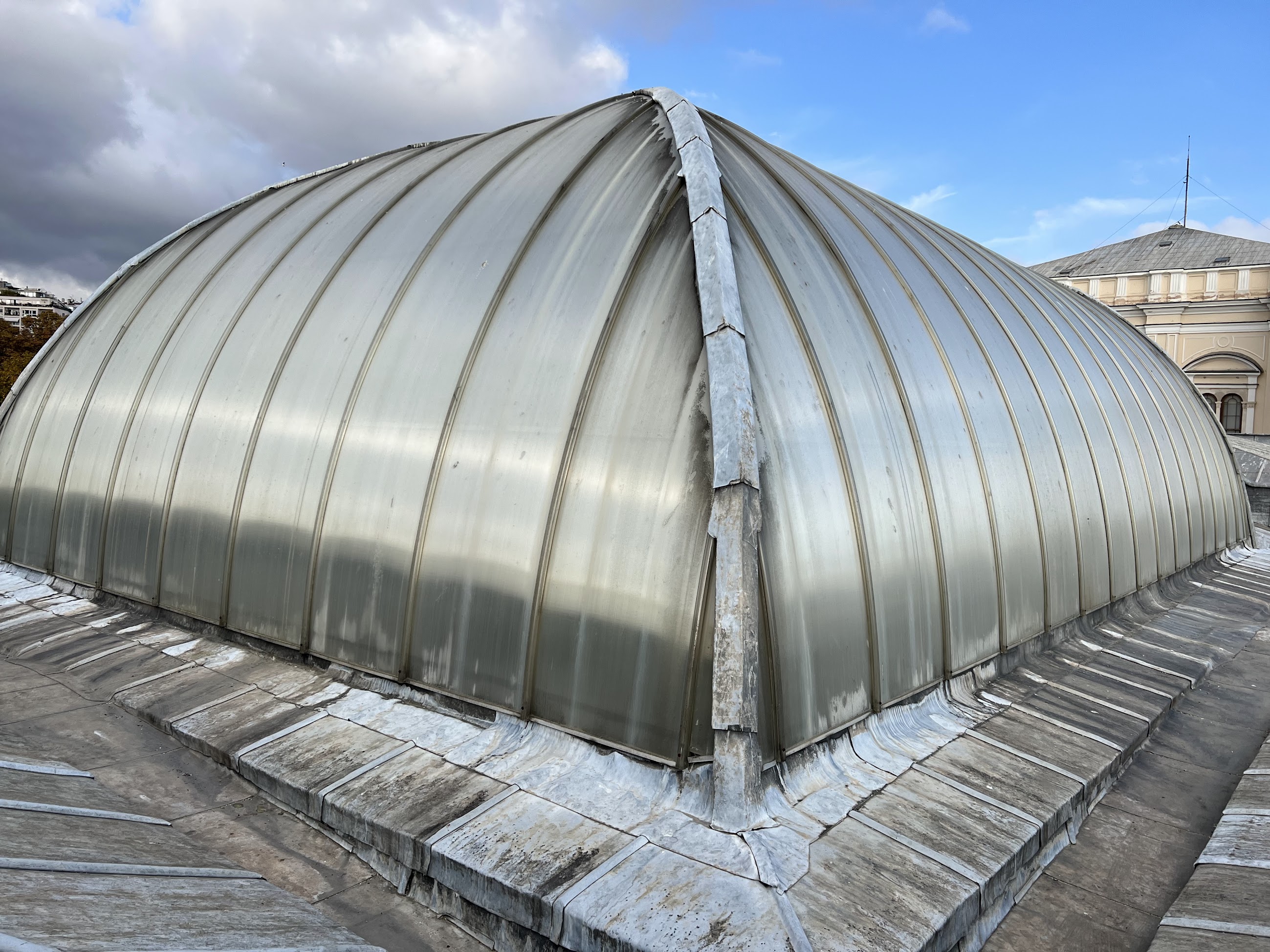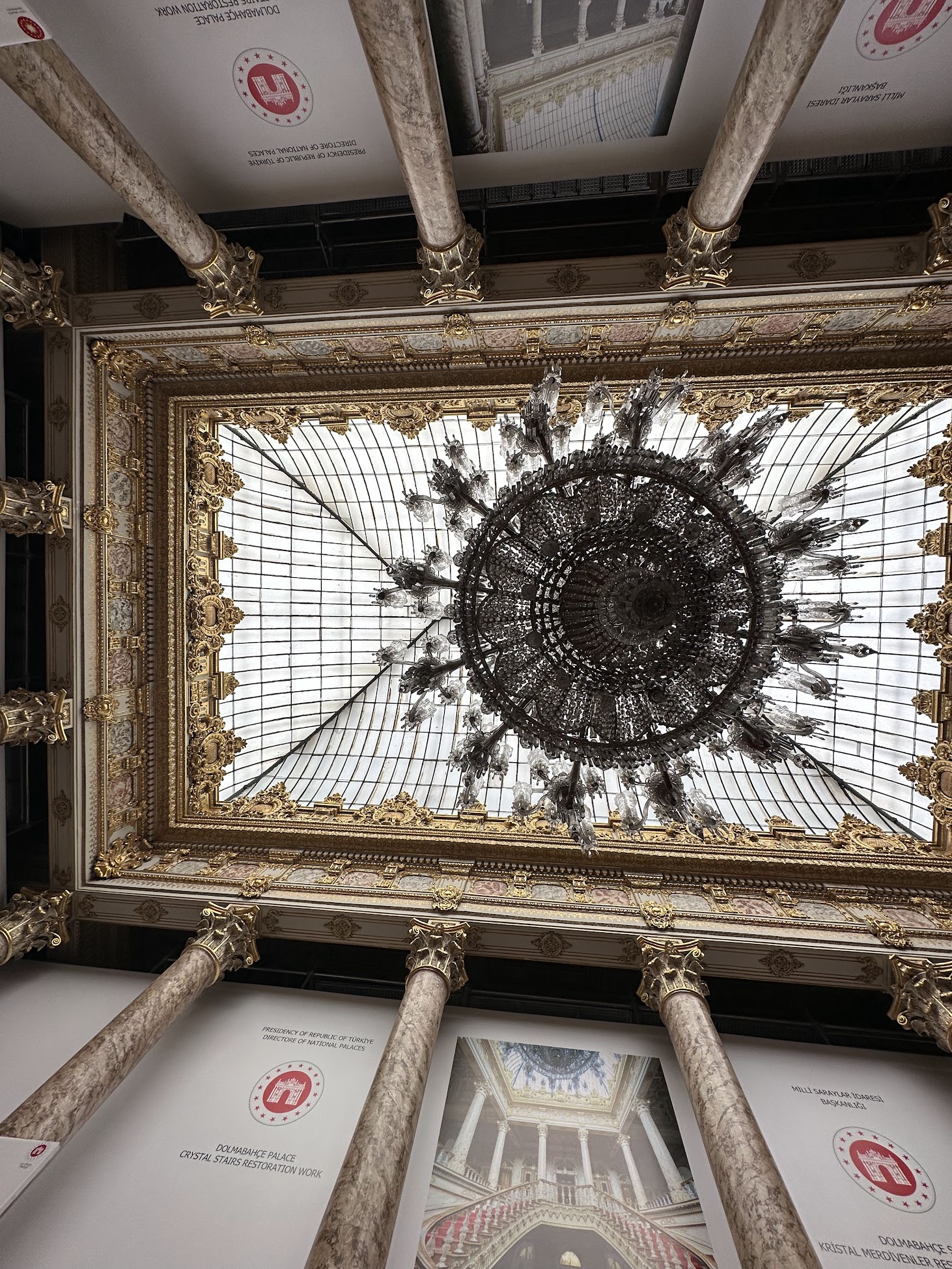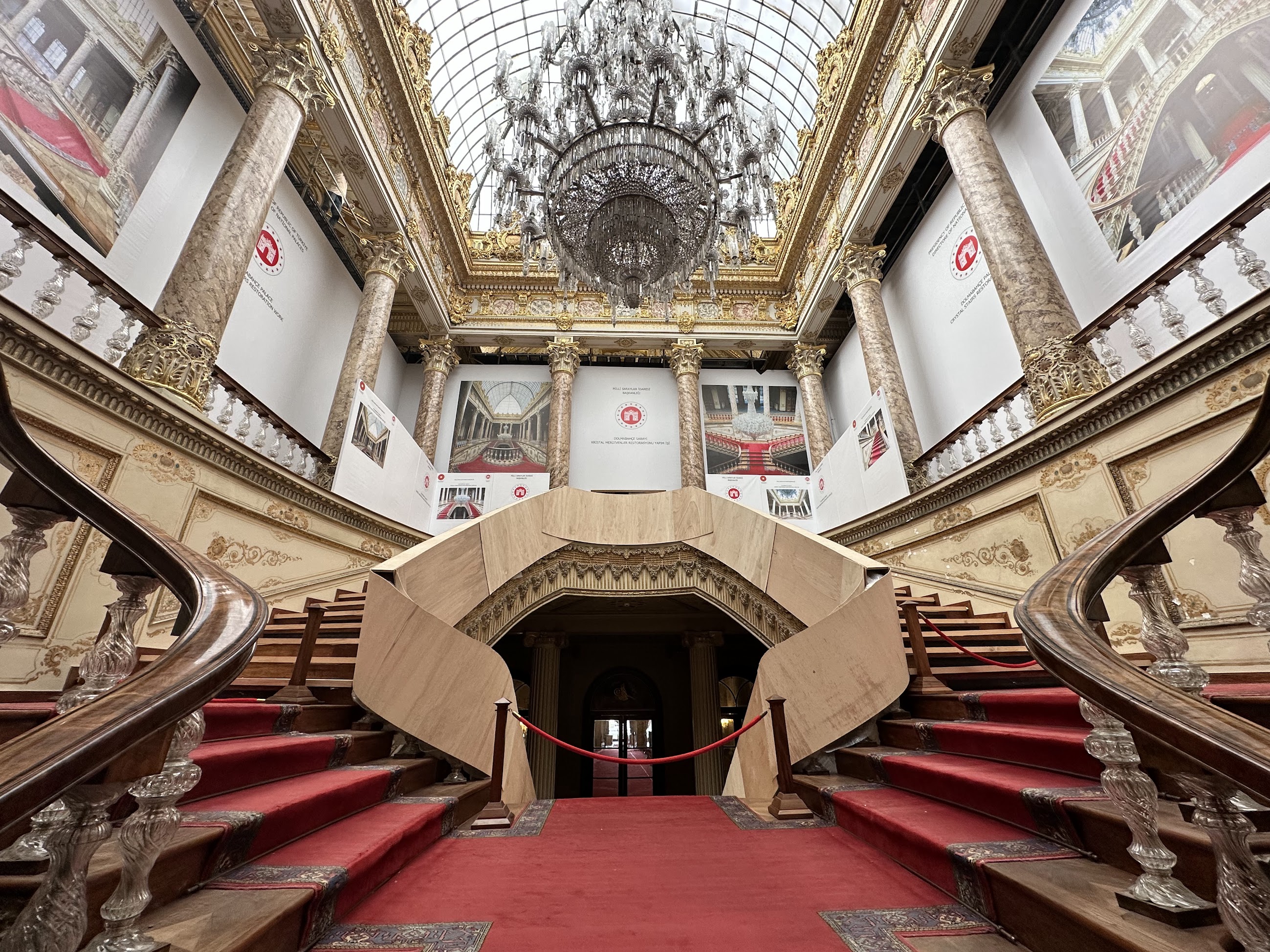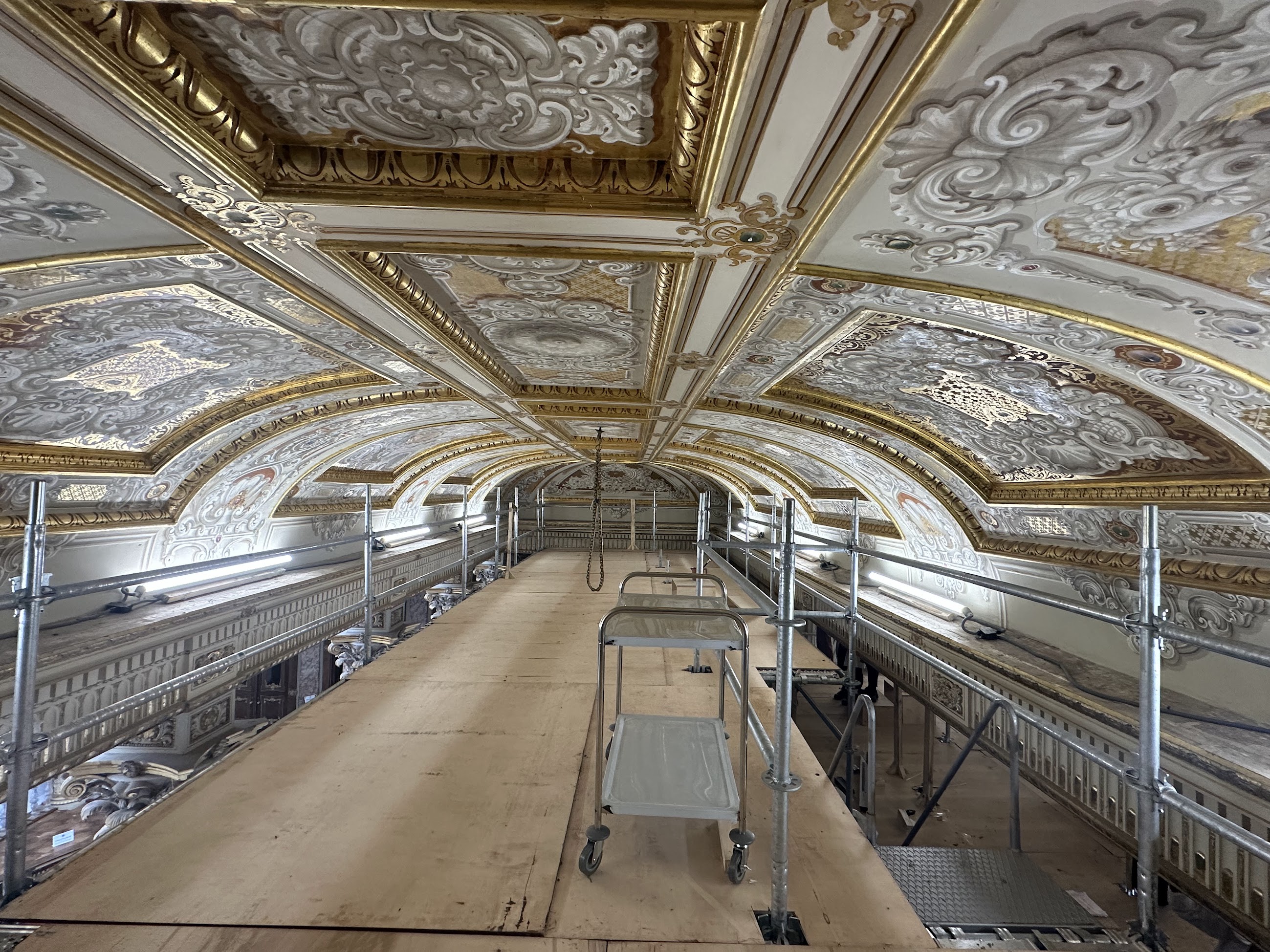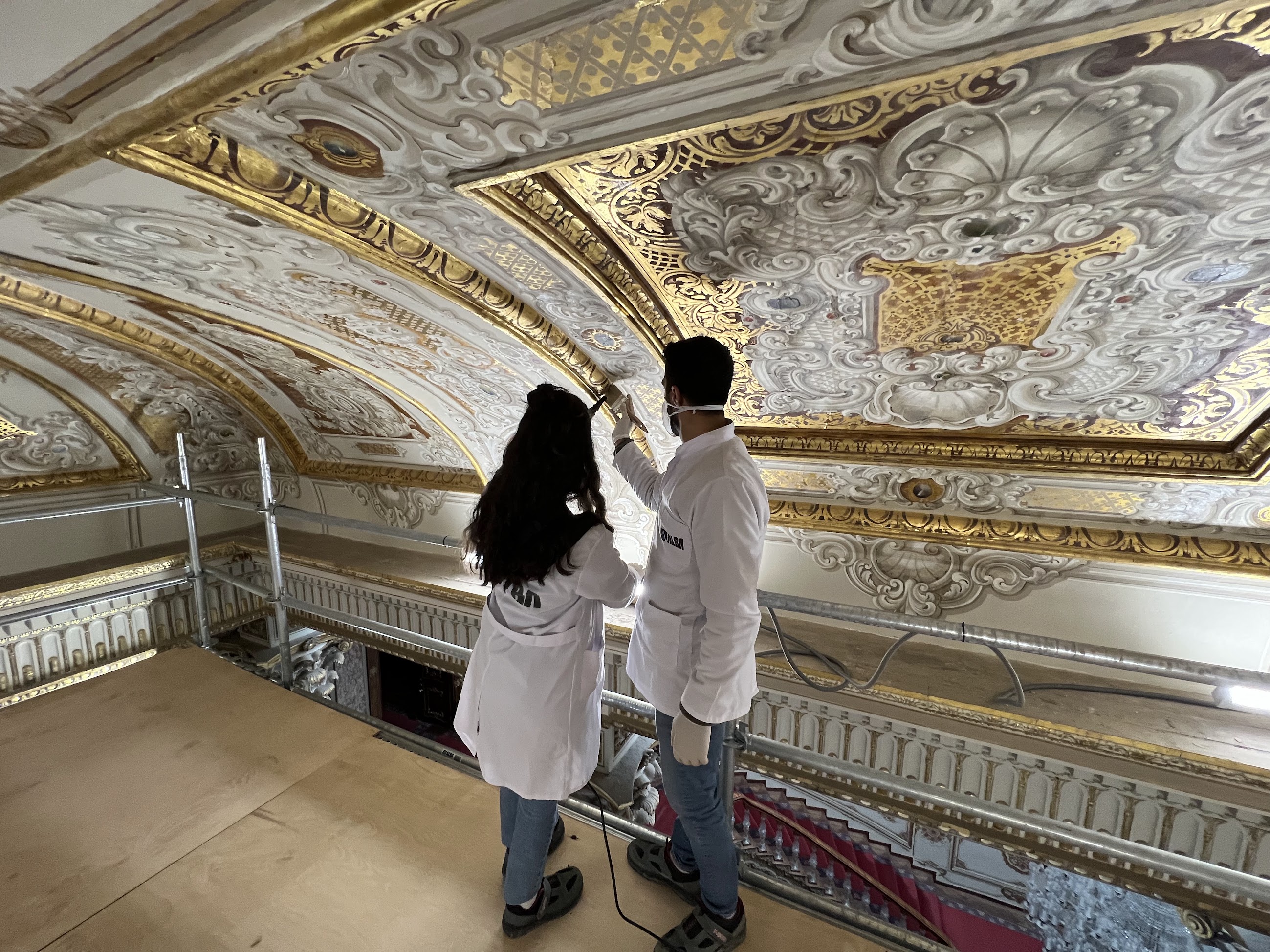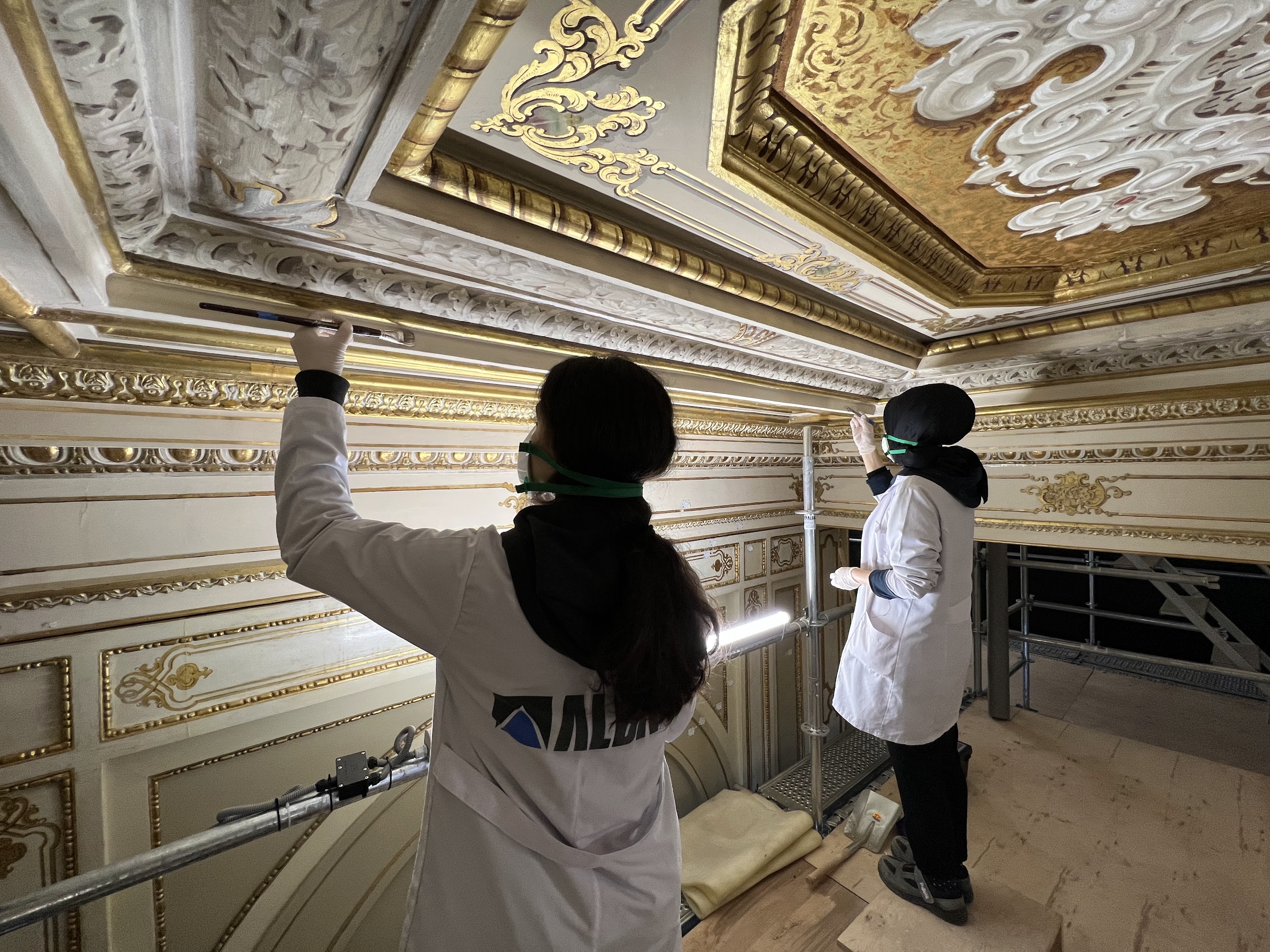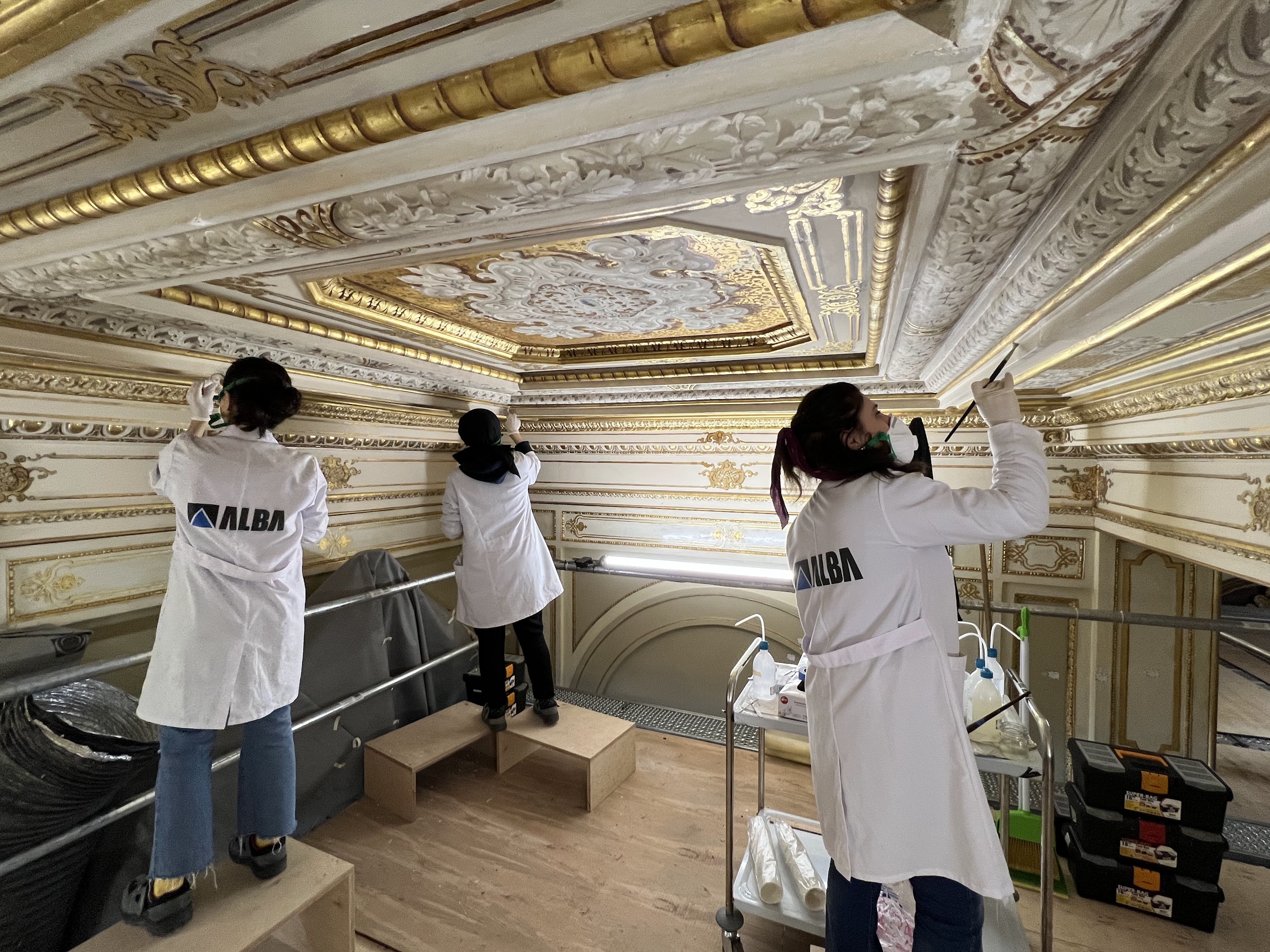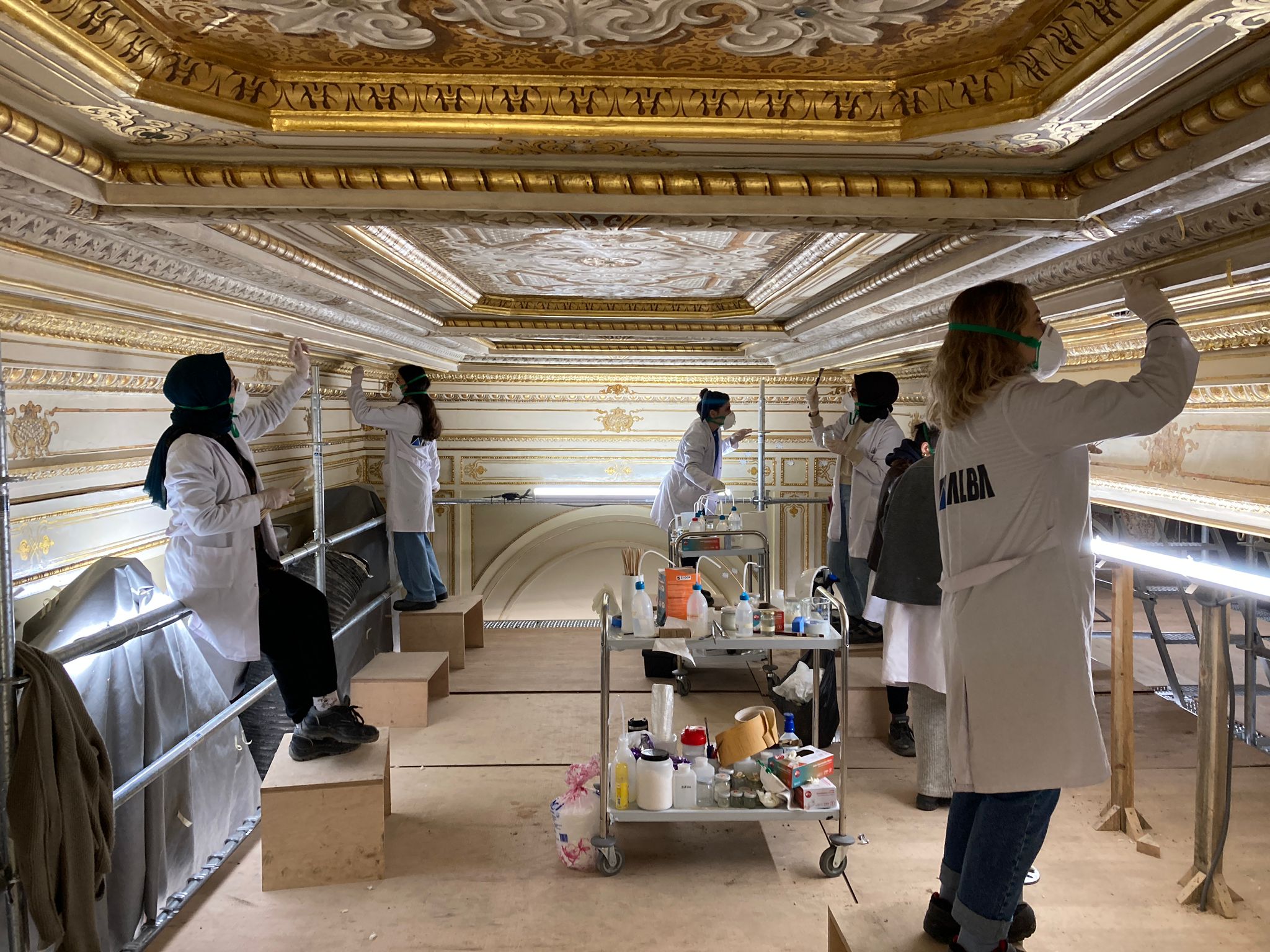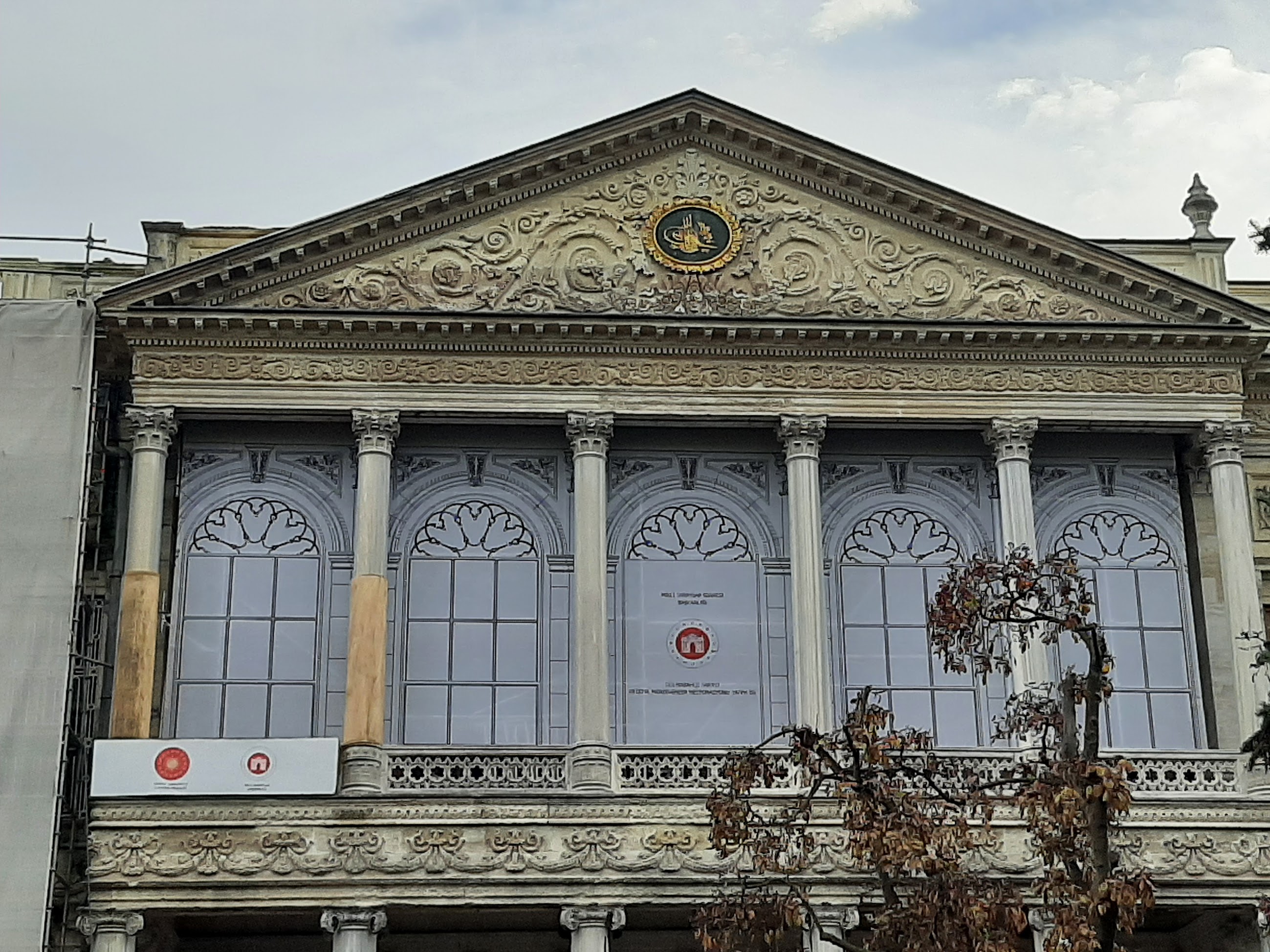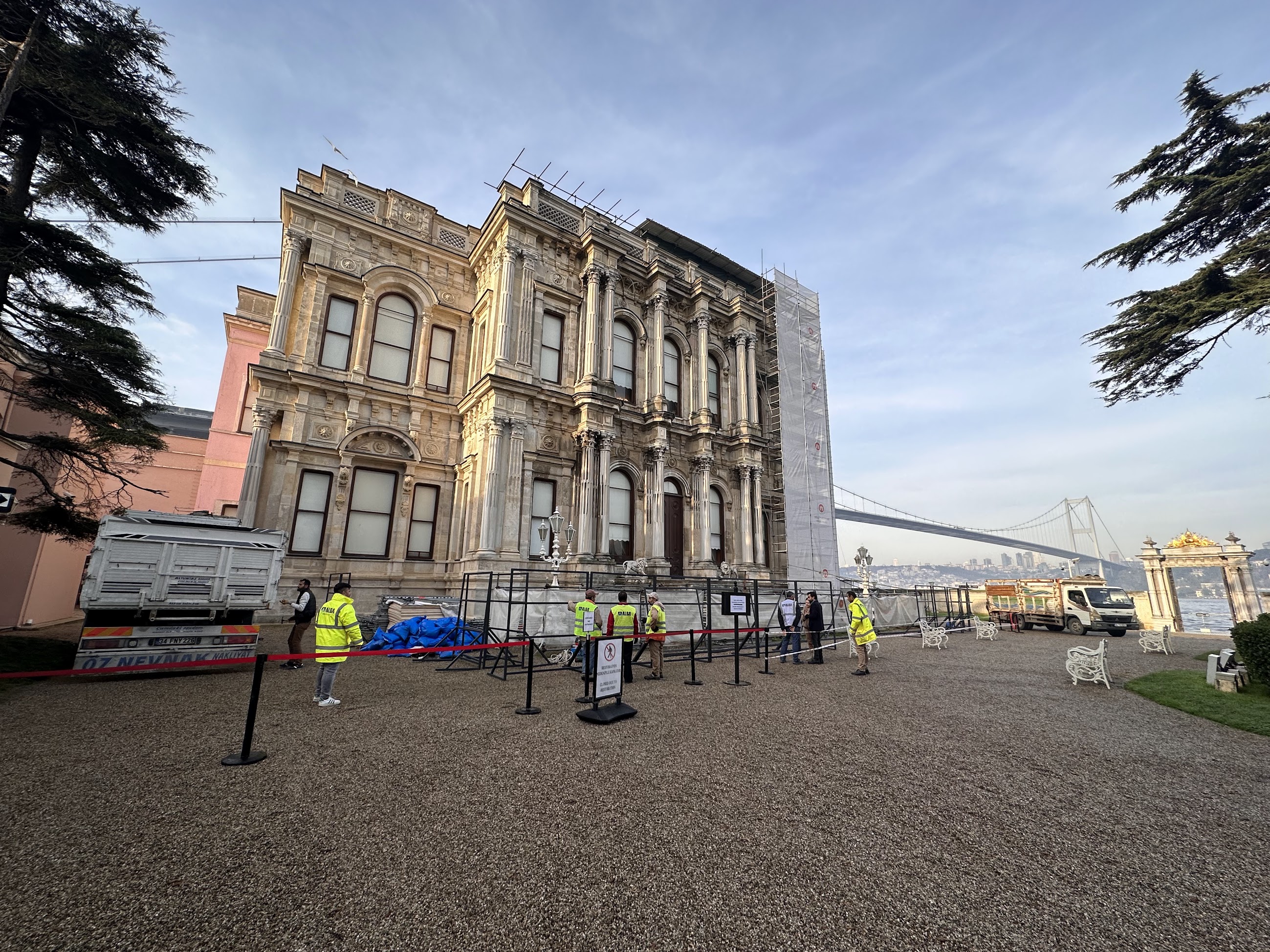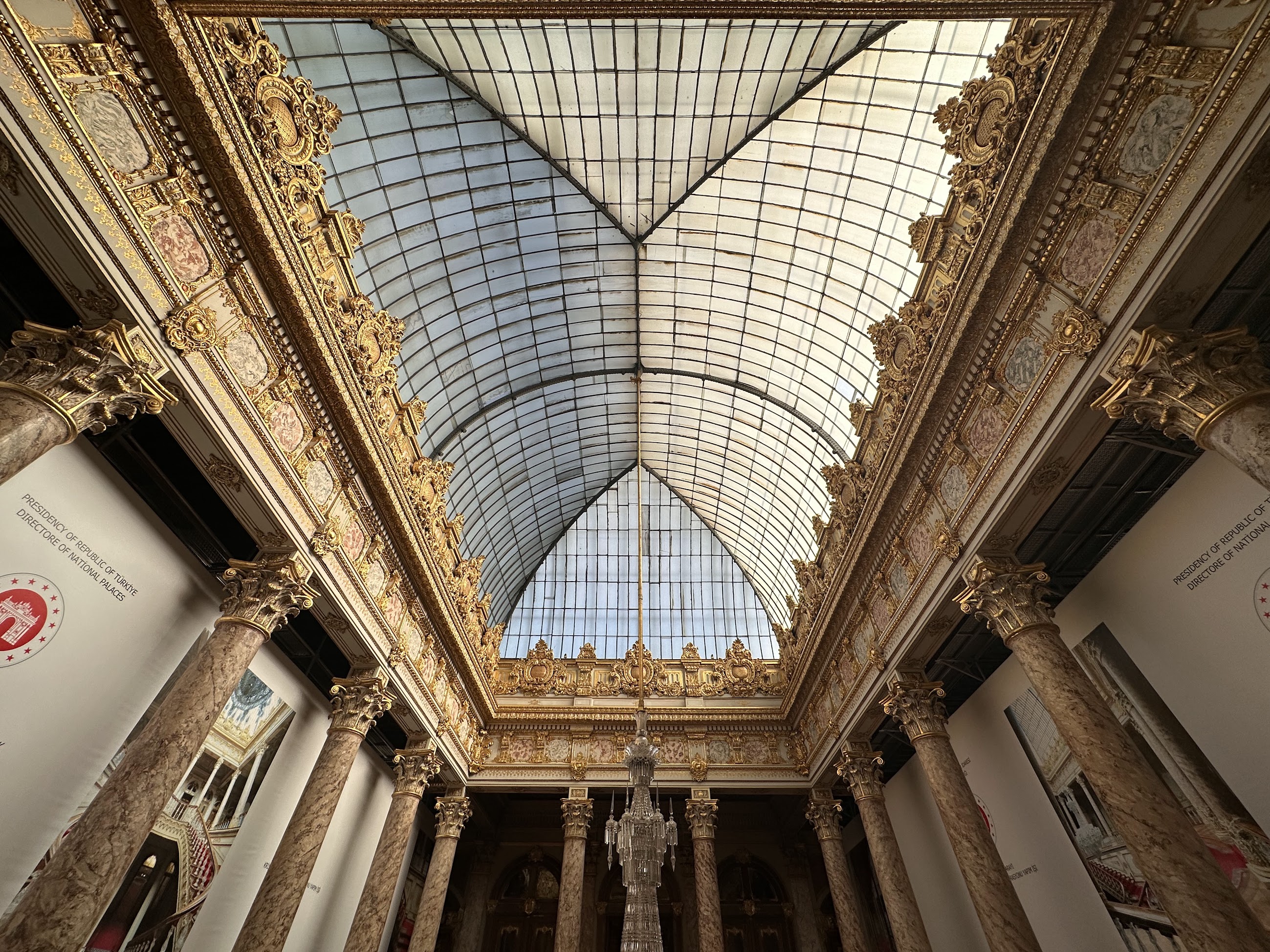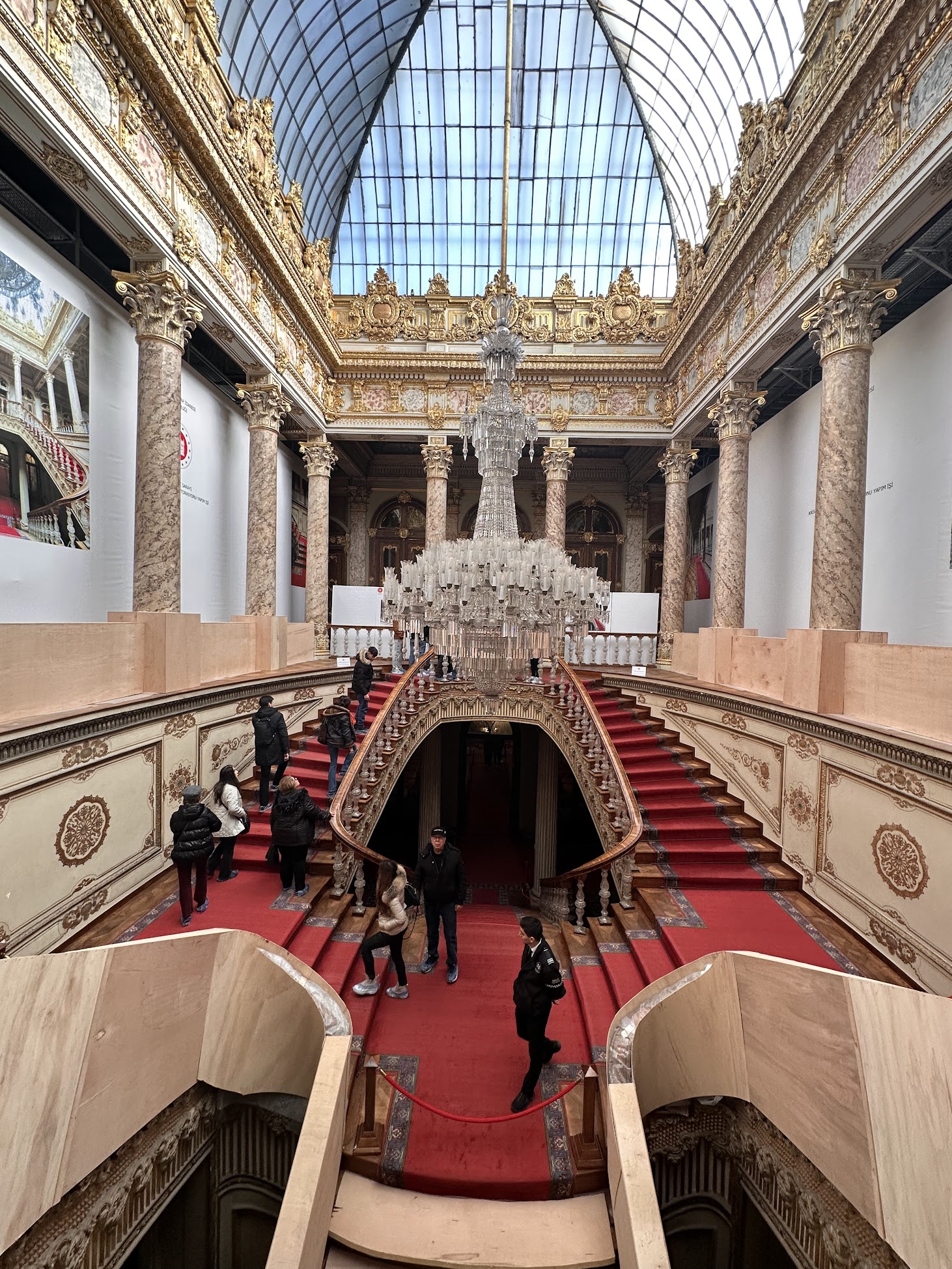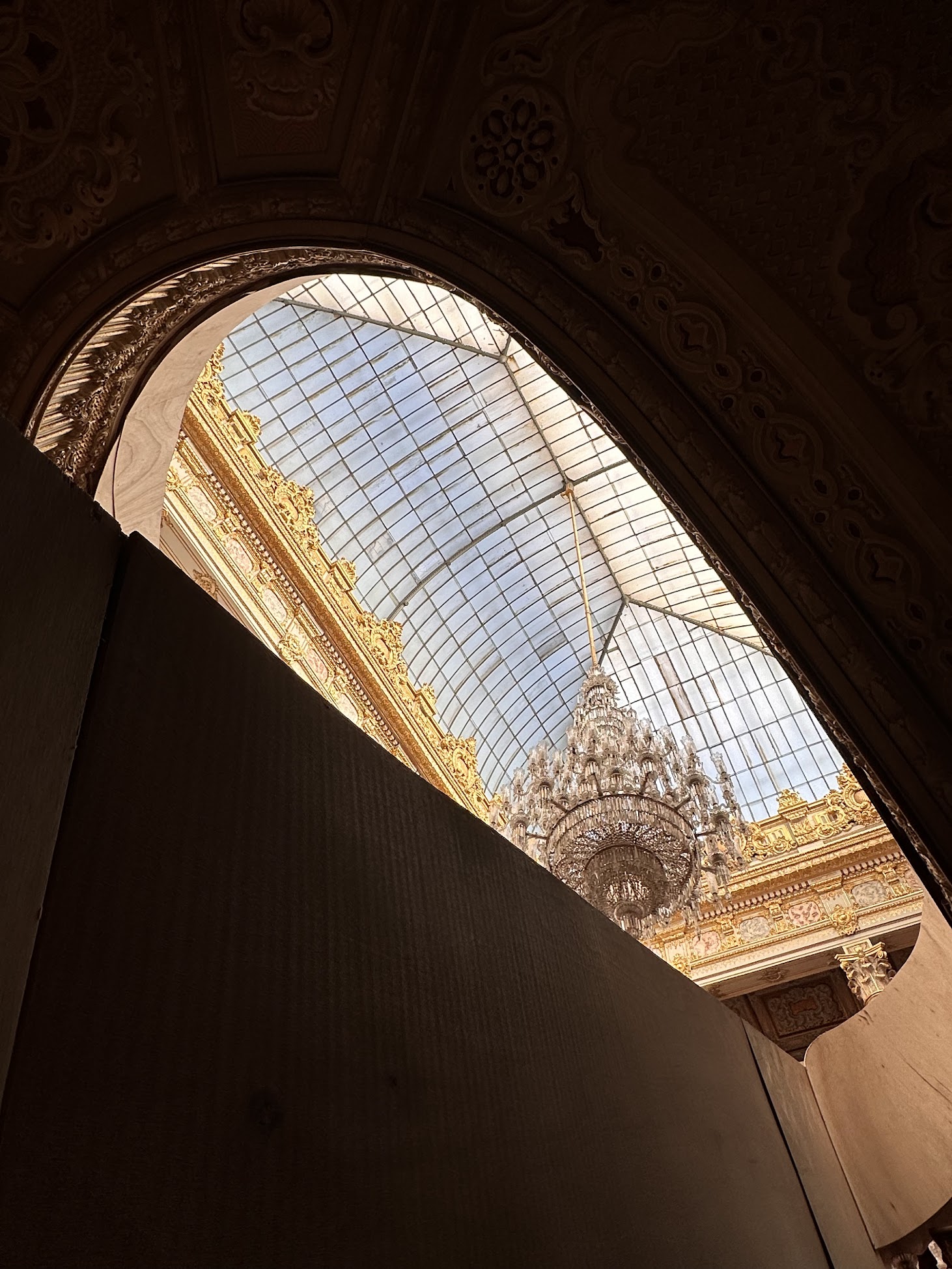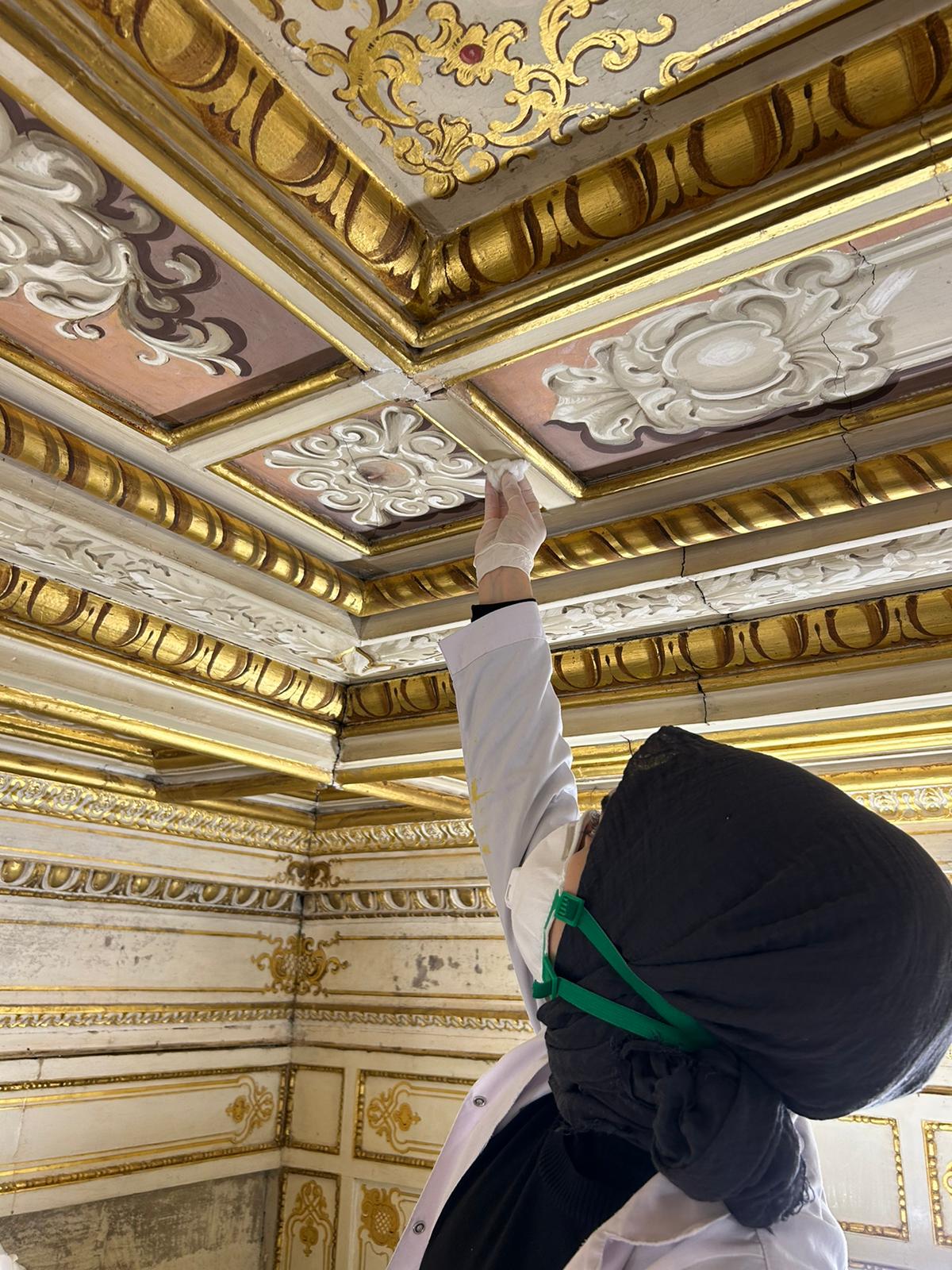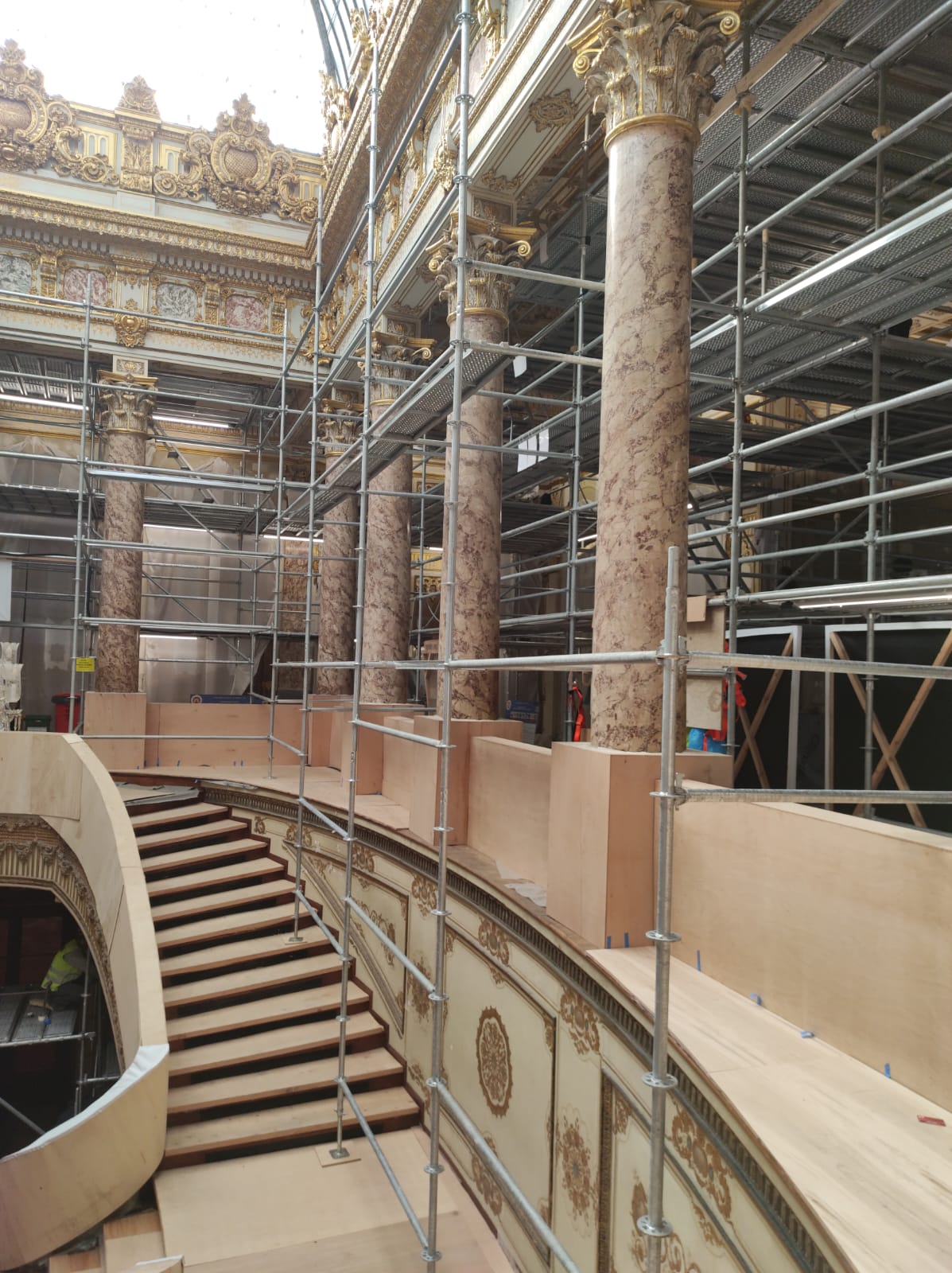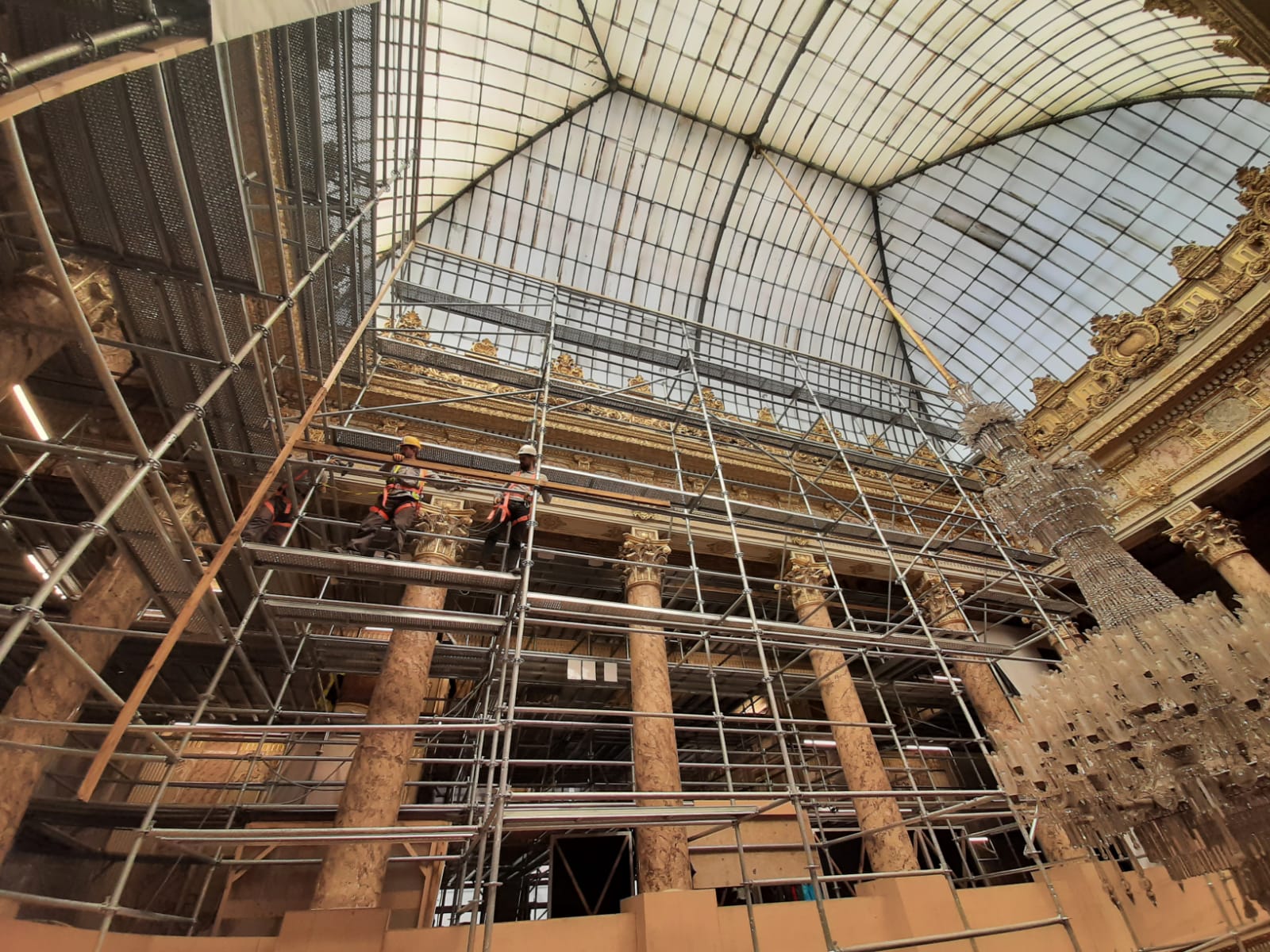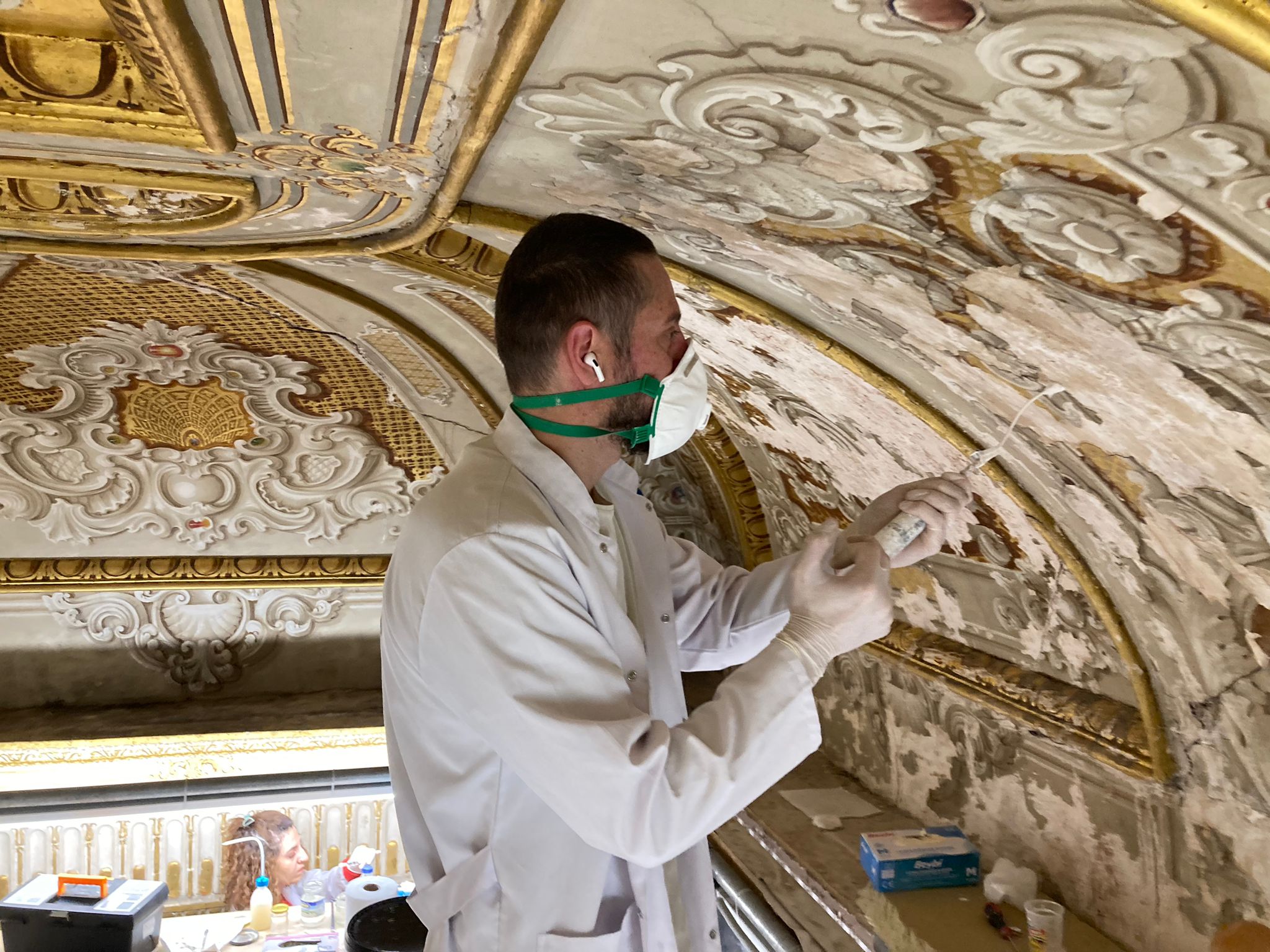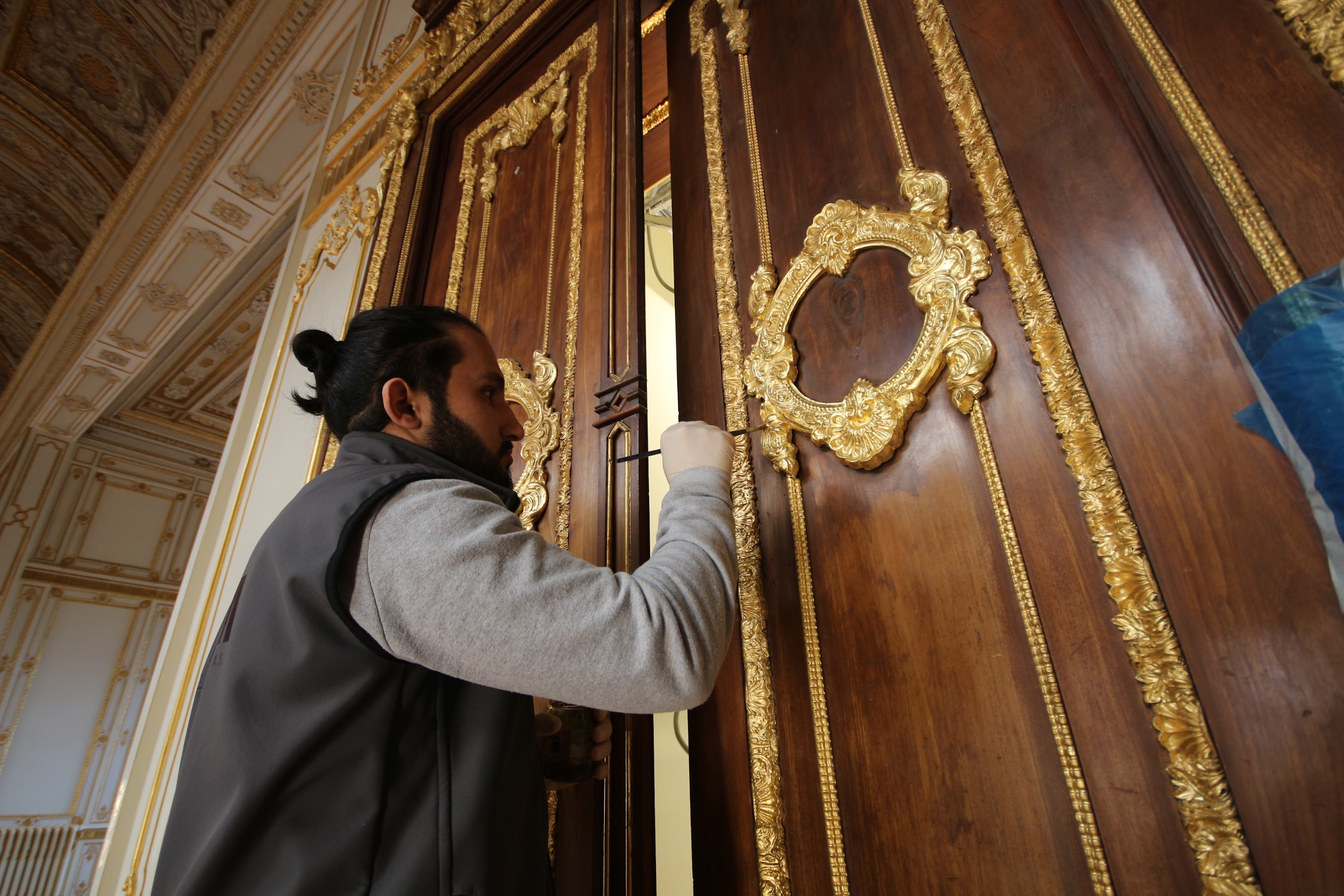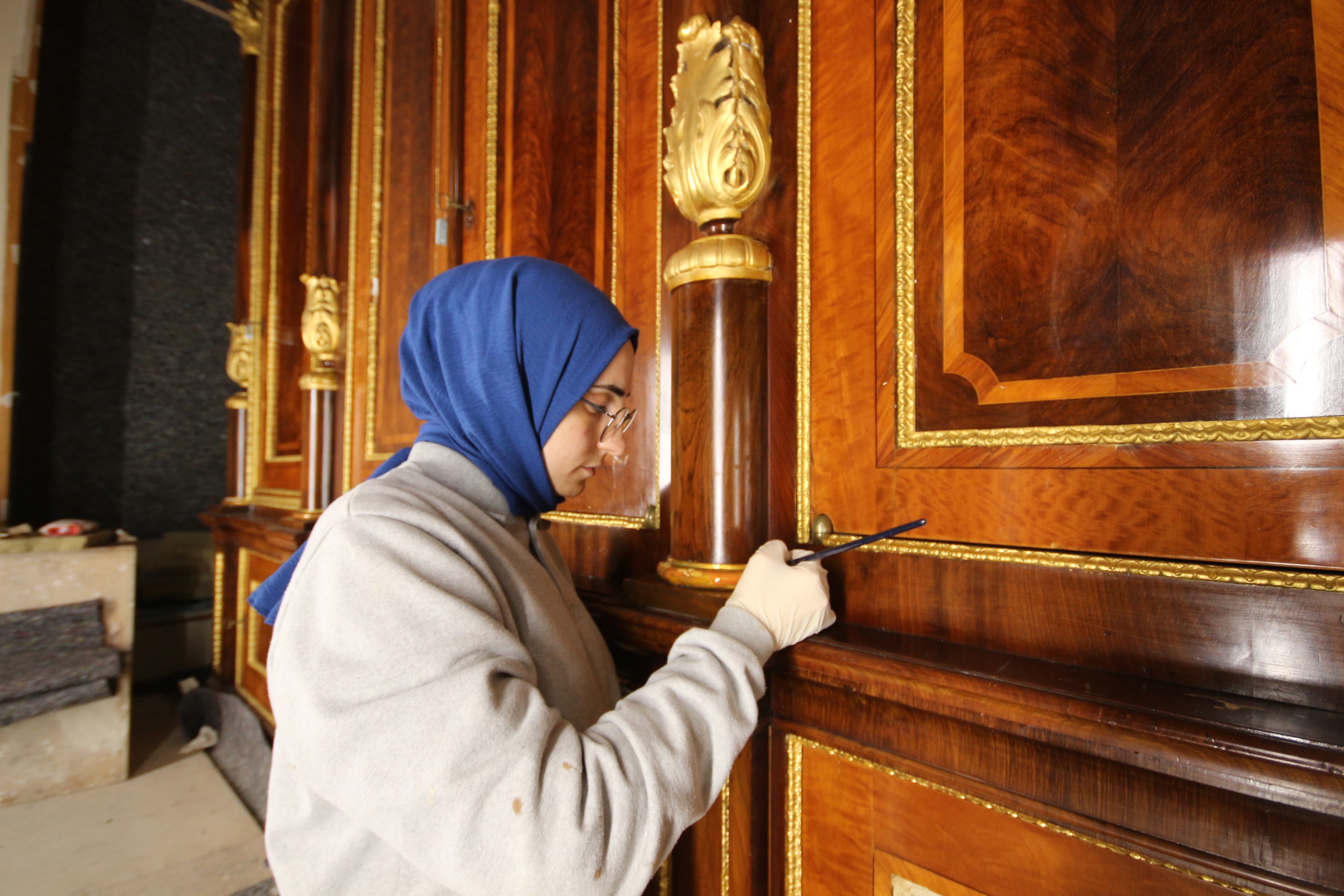DOLMABAHÇE PALACE
The area where Dolmabahçe Palace is located has been known since antiquity as a natural harbor where ships frequently sought refuge. Starting in the 17th century, this bay was gradually filled in and transformed into the sultans’ private imperial garden, known as “Dolmabahçe.” Until the 19th century, the wooden pavilions and mansions built within this garden were collectively referred to as the “Beşiktaş Coastal Palace.”
During the reign of Sultan Abdülmecid (1839–1861), the deteriorated Beşiktaş Coastal Palace was demolished and replaced by the construction of Dolmabahçe Palace. The construction was overseen by imperial architects (Ebniye-i Hümâyûn foremen) Karabet Balyan, Ohannes Serveryan, Nigoğos Balyan, and James William Smith. The role of chief construction officer (bina emini) was held by Hacı Said Ağa from 1843 to 1850, and then by Esseyyid Ali Şahin Bey until 1856.
From 1856 onwards, Dolmabahçe Palace became the residence of six Ottoman sultans Sultan Abdülmecid (1839–1861), Sultan Abdülaziz (1861–1876), Sultan Murad V (1876), Sultan Abdülhamid II (1876–1909), Sultan Mehmed V Reşad (1909–1918), and Sultan Mehmed VI Vahideddin (1918–1922) as well as the last Caliph, Abdülmecid Efendi (1922–1924).
Mustafa Kemal Atatürk, founder of the Republic, stayed in the palace intermittently for four years between 1927 and 1938, conducted important governmental work there, and passed away in the palace. Between 1938 and 1949, it served as the Presidential Office. In 1984, it was opened to visitors as a museum-palace, furnished in line with its original use during the Ottoman era.
In addition to the main building, which extends parallel to the shoreline, the palace complex includes various auxiliary structures such as a glass workshop, foundry, aviary, stables, and service buildings. Among these are the Crown Prince’s Suite, the Clock Tower (added during the reign of Sultan Abdülhamid II), and the Movement Pavilions located in the rear garden of the suite.
Built on a total area of 14,595 square meters, Dolmabahçe Palace features 285 rooms, 44 halls, 68 toilets, and 6 Turkish baths, making it the largest palace in Turkey constructed as a single block.
Functionally and architecturally, the palace carries elements of traditional Ottoman palace layouts as well as the spatial characteristics of the classical Turkish house, such as a central hall and corner rooms. Western architectural styles such as Baroque, Rococo, and Neoclassical were employed in its construction, and these were harmonized with traditional Ottoman art and cultural elements to create a unique synthesis.
As ALBA İnşaat, we completed the restoration of the palace between 2022 and 2025.

